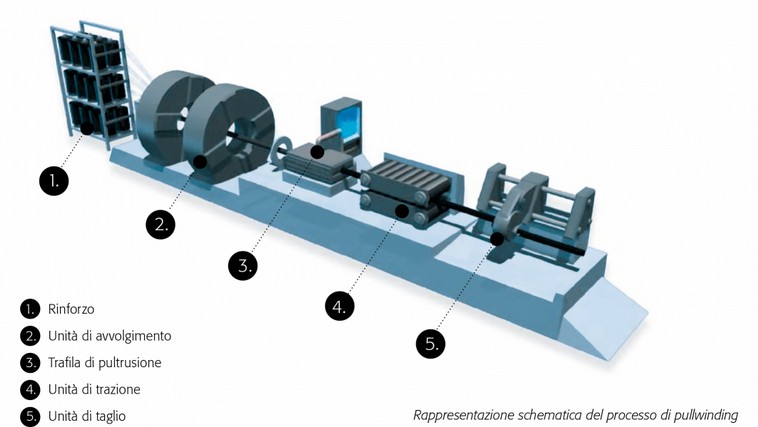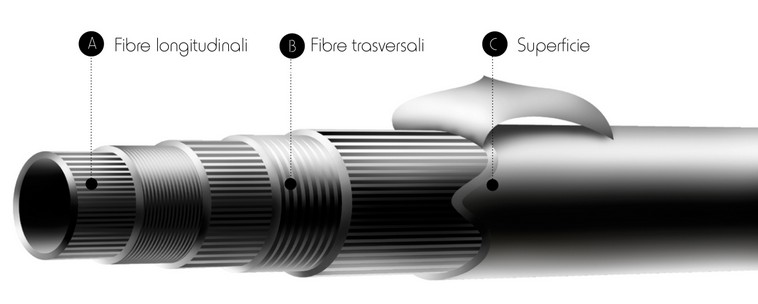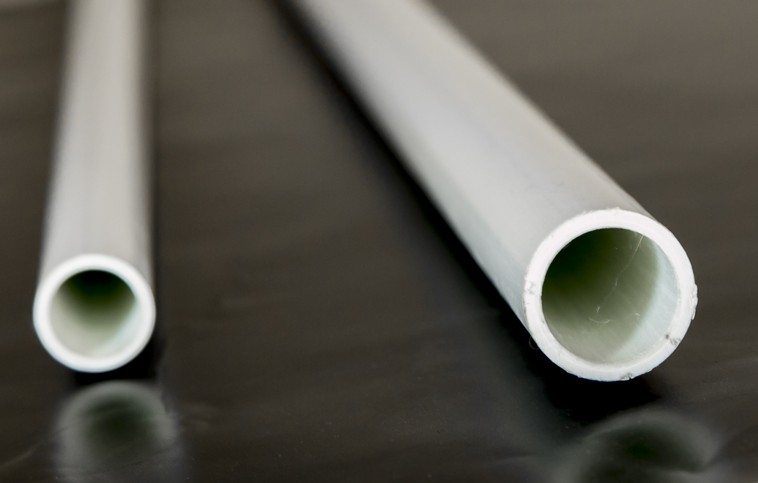MATERIALS
PIPES VTR
What are composites? Composites are a mixture of fibres and resin systems, which in combination result in a very strong and rigid material. The properties of the fibres are used to resist tensile and compressive loads, while the resin systems transfer shear. Because it is a combination of materials, a composite product can be combined and designed with a view to specific load-bearing capacities. Composites provide a number of advantages in relation to traditional materials, such as resistance to chemicals, as well as electrical and thermal insulating properties.
Production process PULLWINDING: tubes are produced with continuous manufacturing technologies: pullwinding. In these techniques reinforcement fibres impregnated with resin are drawn through a heated tool to form a product. The composite cures into its final shape as the thermoset resin hardens inside the die. The product is pulled out from the die by the pulling unit and is cut in desired length. Being a continuous process the product can be cut to any length. Pullwinding technology gives the possibility to have accurate control of the crosswise and longitudial properties of the final product by adjusting the amount of fibres lengthwise and crosswise. Pullwinding process enables the reduction of wall thickness and weight while retaining and improving stiffness and strength compared to conventional pultrusion. Each product is carefully optimized according to application and requirements by combining suitable fibres and resin systems and utilizing certain amount of lengthwise and crosswise.
The advantages: lightweight, strong, stiff, electrically insulating, chemical resistant, weather proof, thermally insulating, good surface quality, versatile structures, dimensionally stable.

Lenghtwise fibres: The lengthwise fibres bring the composite structure the strength and stiffness needed in the lengthwise direction. Alone they yield the highest stiffness possible, as the lengthwise fibres control the lengthwise properties. For maximum tensile strength lengthwise fibres are optimal.
Crosswise fibres: Crosswise fibres tie together the tube structure to avoid the lengthwise layers from slitting. They keep the shape of the tube more stable. By adding crosswise strength to the composite structure they actually increase the maximum bending strength and deflection to failure of the tube.
Surface: The tubes surfaces usually have a nonwoven or fabric surface. The nonwoven is a smooth pleasant single colour surface, while woven appearance is the popular “woven carbon fibre look”. The surface can be coloured using a pigmented resin to any colour specification.






